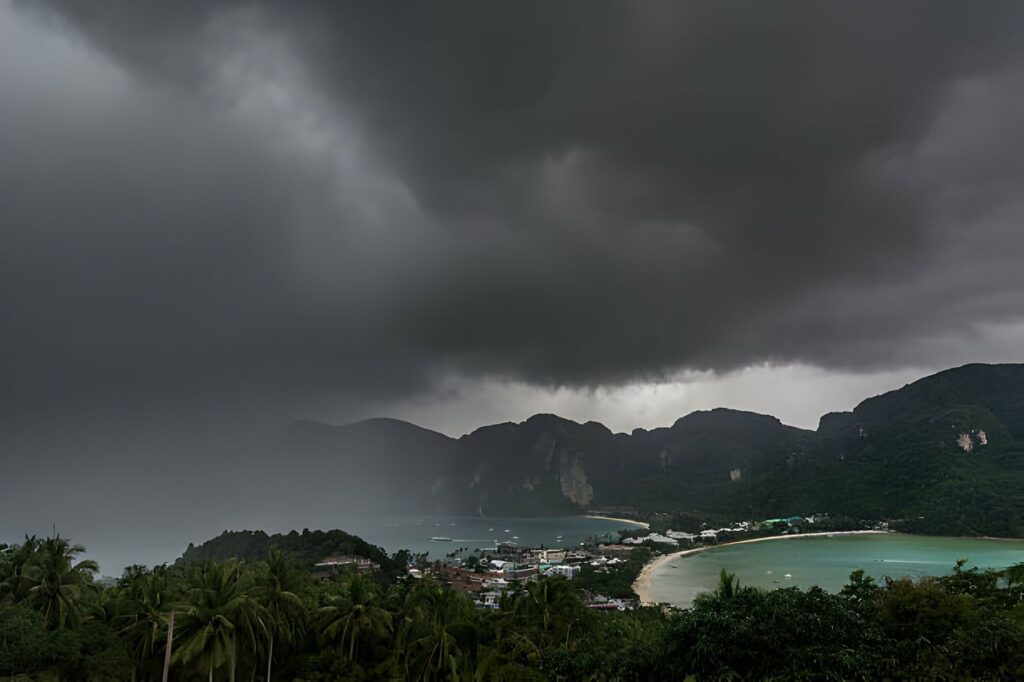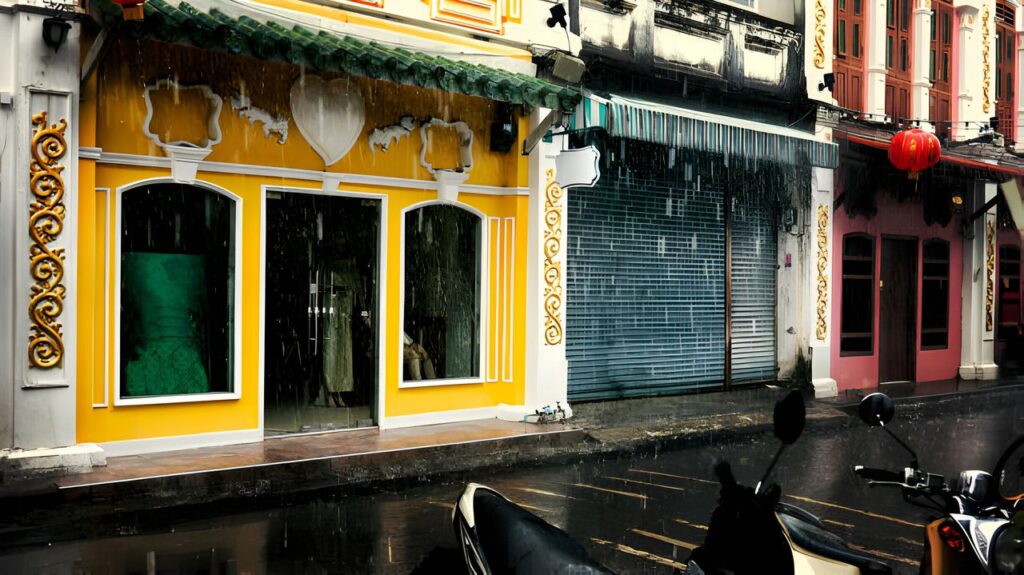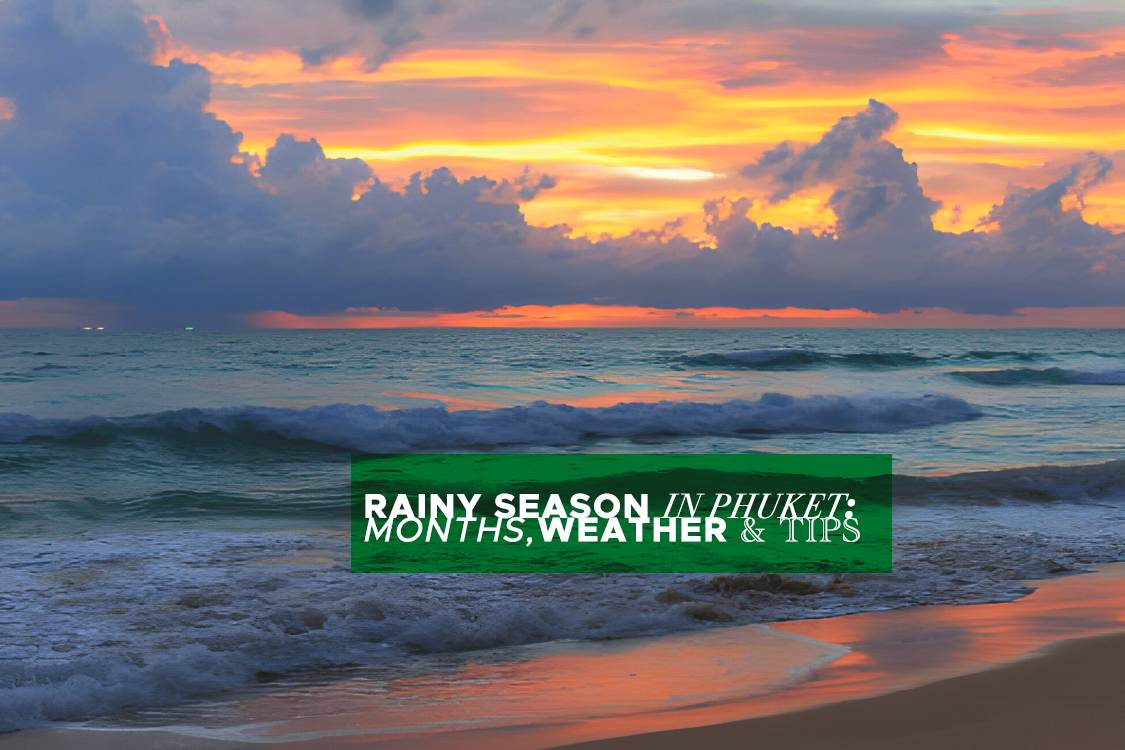Visiting Phuket, Thailand’s gem in the Andaman Sea, is a dream for many travelers. Its pristine beaches, vibrant nightlife, and stunning natural landscapes make it a perfect getaway. However, when planning a trip to this tropical paradise, understanding the climate, especially the monsoon period, is crucial. The rainy season, or monsoon season, dramatically transforms Phuket, offering a unique experience for those who dare to embrace it. This guide will delve into what to expect during the monsoon in Phuket 2024, from weather patterns to safety tips, and provide an insightful look at the Big Buddha, an iconic landmark that is a must-see, rain or shine.
Read Also: Things to Do in Phuket When It Rains
When and What to Expect in Rainy Season in Phuket
The rainy season in Phuket typically spans from May to October. This period, also known as the monsoon or low season, is characterized by rainfall and occasional storms brought by the southwest monsoon winds starting around April or May.
While some may consider this the worst time to visit, it offers a unique charm. The island transforms into a lush, green paradise, with landscapes becoming vibrant and colorful, a sight not as prominent during the high season.
Read More: Best Time To Visit Phuket: Seasons & Weather By Month (2024)
This presents opportunities for cost savings, as hotel rates drop, and various tour operators and activities offer lower prices. While June, July, and August remain popular among tourists, May, September, and October are quieter due to the persistent rain.

Insider Tips about Rainy Season in Phuket
- Rain Showers: Rain showers during the rainy season are often short and intense, which means they usually won’t disrupt your plans for the entire day. These showers contribute to the island’s lush, green landscapes.
- Unlucky Weeks: Locals believe in “Unlucky Weeks,” where you might experience 3, 6, or 9 days of non-stop rain. While these weeks are less common, it’s essential to be prepared for them.
- Budget-Friendly Travel: One of the significant advantages of visiting during the rainy season is that you can find better deals on accommodations and activities. It’s the most budget-friendly time to explore Phuket. Read More >>
Choosing the Right Time to Visit Phuket
Ultimately, the best time to visit Phuket during the rainy season depends on your preferences:
- Dry Season: If you want to enjoy the island’s pristine beaches and water activities without worrying about rain, the dry season (November to April) is ideal for you. Read more >>
- Rainy Season: On the other hand, if you’re seeking a more budget-friendly experience, don’t mind occasional rain showers, and want to witness the lush green landscapes, the rainy season can offer a unique and enjoyable visit.
Monthly Rainfall Breakdown in Phuket
Here’s a breakdown of the rainfall patterns in Phuket throughout the rainy season:
- May: The rainy season fully arrives, with frequent and sometimes prolonged rain. However, temperatures become more comfortable.
- June: Rainfall persists but usually consists of short downpours. There are often several rain-free days, accompanied by blue skies and pleasant temperatures.
- July: The rainy season continues, with occasional downpours but without major disruptions. Comfortable temperatures and occasional blue skies are common.
- August: This month sees an influx of tourists, especially from Europe and Australia, as it offers a balance between rain and sunshine. Rain showers are an inconvenience rather than a significant annoyance, and the cooling breeze keeps temperatures comfortable.
- September: September marks the wettest month of the year, with frequent and sometimes extended rain. Blue skies are rare, but average high temperatures remain close to 30 degrees Celsius.
- October: The rainy season persists, with frequent rainfall and limited blue skies. Expect wet conditions during your visit.
Despite the rain, each month has its own charm and moments of beauty, with occasional clear skies and comfortable temperatures.
Don’t Miss The Best Tours in Phuket
Average Rainfall in Phuket
In an average year, Phuket receives approximately 2,200 millimeters (87 inches) of rainfall. The southwest monsoon, which affects the Andaman Sea coast where Phuket is located, brings more abundant rains than the Gulf of Siam coast. The rainy season has two peaks, in May and September-October. However, some years may experience torrential rains even in July and August.
- January: 35.1 millimeters (1.44 inches)
- February: 40.1 millimeters (1.63 inches)
- March: 75.3 millimeters (2.96 inches)
- April: 125.4 millimeters (4.91 inches)
- May: 295 millimeters (11.61 inches)
- June: 265 millimeters (10.41 inches)
- July: 215 millimeters (8.51 inches)
- August: 245 millimeters (9.61 inches)
- September: 325 millimeters (12.81 inches)
- October: 315 millimeters (12.41 inches)
- November: 195 millimeters (7.71 inches)
- December: 80 millimeters (3.18 inches)

The Pros and Cons of Rainy Season in Phuket
Pros:
- Lush landscapes: The rain turns Phuket into a green haven.
- Lower prices: Accommodation and activities often offer discounts.
- Less crowded: With fewer tourists, experience a more relaxed atmosphere.
Cons:
- Unpredictable weather: Plans can be disrupted by sudden rain.
- Dangerous sea conditions: Strong undercurrents and large waves make sea swimming risky.
- Limited beach days: Sunbathing and water activities are less reliable.
Tips for Traveling During Monsoon in Phuket
1. Be Flexible with Plans
Online weather forecasts often portray a pessimistic outlook, predicting non-stop thunderstorms during the entire low season. In reality, it doesn’t rain every day, and when it does, it’s often in short, manageable bursts. Don’t let overly cautious weather forecasts deter you.
2. Choose a Hotel with a Pool
During the rainy season, the sea can be rough most of the time. Selecting a hotel with a good swimming pool ensures you have a great holiday. Respect the warning flags on the beach and swim only when conditions are safe.
Read also: Best Hotels with Private Pools in Phuket: Luxury on a Beach (2024)
3. Stay Safe
Heed red flags at beaches and avoid swimming when they’re up. The sea is particularly treacherous during monsoon. Approximately 20 people drown during this season each year, leading to the raising of red flags on beaches to warn of hazardous conditions. Swimming in the sea when red flags are displayed is strongly discouraged.
4. Embrace the Beauty
Don’t let the rain dampen your spirit. Phuket’s rainy season offers stunning sunsets and a verdant landscape that’s uniquely beautiful.
5. Bargain and Enjoy
With fewer tourists, haggle for better deals on tours and souvenirs. Enjoy the more personal attention you’ll get from less harried staff.
6. It Doesn’t Rain Every Day
Contrary to popular belief, rainy season days don’t equate to continuous rainfall. While there are “Unlucky Weeks” with extended rain, sunny days are also part of the rainy season. For the driest conditions, consider visiting between January and May.
7. Opt for the Main Beaches
Popular beaches like Patong, Karon, Kata, Kamala, and Bangtao remain relatively busy during the rainy season, providing a balance between convenience and solitude. Smaller, less-known beaches may feel isolated and may accumulate more trash during this time.
Read More: Best Swimming Beaches in Phuket & Not Swimming Beaches 2024
8. Tours Still Operate
Despite occasional rain, most tours operate normally during the rainy season. Some, like Phang Nga Bay, offer unique experiences with heavy clouds. While the sea may be rough at times, motion sickness prevention pills can be a helpful addition.
9. Witness Stunning Sunsets
Cloudy skies during the rainy season can create breathtaking sunsets with unique colors. Enjoy these captivating moments when the sun sets over Phuket.
Read More: 17 Best Viewpoints in Phuket: Sunset Spots & View Cafes 2024
Conclusion: Rainy Season in Phuket
Visiting Phuket during the monsoon season is an adventure of its own. With the right preparation and mindset, it can be an incredibly rewarding experience, offering a glimpse of the island’s beauty that many never see. So, if you’re considering a trip during the rainy season in Phuket 2024, embrace the chance to see this tropical paradise in a whole new light. Whether it’s witnessing the majesty of the Big Buddha amidst the mist or enjoying the lush landscapes after a fresh rain, Phuket has something special to offer every traveler, rain or shine.
FAQ about Rainy Season in Phuket
What is the rainiest month in Phuket?
September is typically the wettest month in Phuket, with the highest average rainfall.
What is the best month to visit Phuket?
For dry weather and sunshine, January to May is ideal. For a quieter, greener experience, consider June to August.
What is the rainiest month in Thailand?
Generally, September is the rainiest across Thailand, but regional variations exist.
Is it worth going to Thailand in the rainy season?
Absolutely. If you don’t mind the rain and are prepared for a different kind of adventure, Thailand during the rainy season can be a unique and rewarding experience.
IF YOU LIKED OUR ARTICLE ABOUT Rainy Season in Phuket, YOU ALSO MIGHT LIKE:
- The Best Zipline in Phuket: Flying Hanuman Tours (2024)
- Things to Do in Phuket for Couples: Romantic Guide 2024
- Diving in Phuket: Best Spots & Tours for Beginners & Pro (2024)
- 13 Best Spas in Phuket: Patong, Phuket Town, Bang Tao & More 2024
- 2 Days in Phuket: Itinerary & Things to Do for 48 Hours 2024
- 3 Days in Phuket: Itinerary, Things to Do & Places to Visit 2024
- 4 Days in Phuket: Itinerary, Things to Do & Places to Visit 2024
- 15 Best Fitness Clubs and Gyms in Phuket – Sport Trip 2024
- 12 Best Yoga Studios and Yoga Classes in Phuket 2024
- Phuket Old Town Walking Tour: Full Guide 2024
Don’t Miss The Best Tours in Phuket
